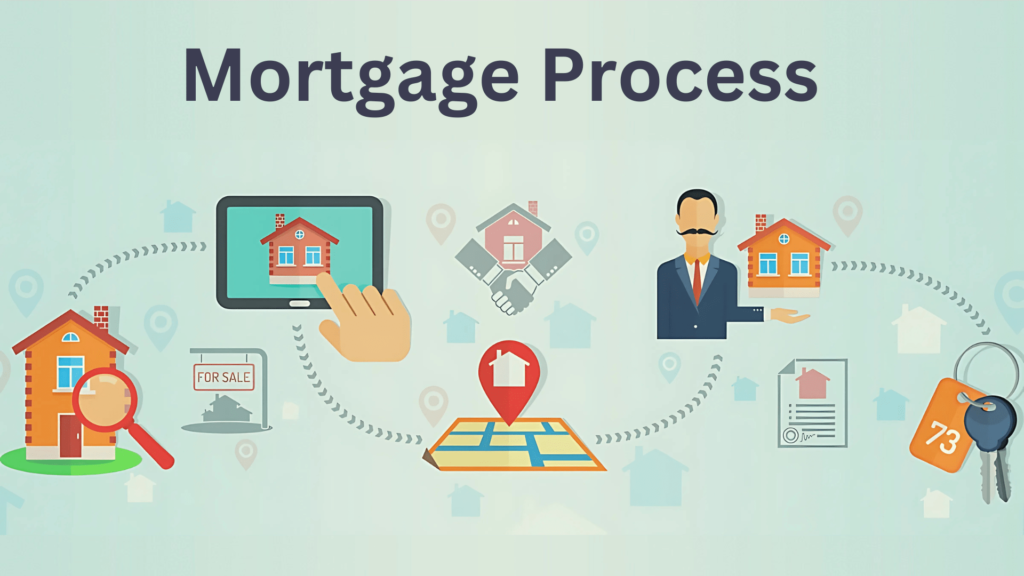
The mortgage process in Florida is similar to a job interview, but focused on your financial history. Lenders review your credit score, income, job status, and savings to see if you qualify for a mortgage. They carefully examine your financial documents, much like a resume, to assess your ability to repay the loan.
This guide will take you through each step of the mortgage process in Florida, helping improve your chances of becoming a successful homeowner.
Table of Contents
Toggle1. Estimate How Much Home You Can Afford
Start by using a home affordability calculator to gauge how much you can borrow. Lenders primarily consider your debt-to-income (DTI) ratio, which reflects how much of your income will go toward your mortgage and other debts. Remember to account for lifestyle expenses and set aside funds for home maintenance.
2. Get Preapproved for a Mortgage and Gather Financial Documents
If you’re serious about buying a home, obtaining a mortgage preapproval is crucial. This involves submitting your credit profile, which includes details about your credit history, income, and savings. To begin, request quotes from at least three lenders and compare their loan estimates.
You will typically need to provide:
-
- One month of pay stubs
- Two years of W-2s or tax returns
- Two months of bank statements
- Two years of addresses
- Two years of employment history
Once approved, you’ll receive a preapproval letter that indicates the loan amount you qualify for.
3. Find a Home and Make an Offer
Most buyers work with a real estate agent to identify suitable properties and submit offers. Your agent can assist in negotiating terms and advising on contingencies—conditions that must be met for the sale to proceed. Additionally, they may help negotiate for the seller to cover some closing costs, which can save you money.
4. Get a Home Inspection in Mortgage Process
After your offer is accepted, arrange for a home inspection to assess the property’s condition thoroughly. If any issues arise, you can ask the seller for repairs or negotiate closing cost concessions instead. If significant problems are discovered and the seller is uncooperative, you have the option to withdraw your offer and reclaim any earnest money.
5. Finalize Your Mortgage Lender and Lock Your Rate
Choosing the right lender is vital. Revisit the lenders from Step 2 to update rate quotes based on your selected property. Once you choose a lender, request to lock in your mortgage rate to avoid fluctuations during the closing process.
6. Schedule a Home Appraisal
A licensed appraiser will evaluate the property’s value compared to similar homes in the area. If the appraisal meets or exceeds the purchase price, you can proceed; otherwise, you may need to renegotiate the price or cover the difference at closing.
7. Finalize Your Underwriting Approval
This step involves finalizing all necessary documentation for loan approval. Ensure that:
-
- You provide any final documents requested.
- You secure homeowners insurance.
- You decide on title vesting arrangements.
- You avoid any major financial changes that could jeopardize approval.
8. Review Your Closing Disclosure
After underwriting approval, you’ll receive a Closing Disclosure detailing loan terms and costs. Review this document carefully at least three business days before closing day to address any discrepancies.
9. Gather Your Down Payment and Closing Cost Funds
Prepare the necessary funds for your down payment and closing costs as indicated by your escrow officer or attorney handling the closing process.
10. Close on Your Mortgage
On closing day, you’ll sign various documents either electronically or in person at an escrow office or attorney’s office. After signing, ownership will transfer officially into your name at the local recorder’s office.
Your closing package will include instructions on where to send your first mortgage payment—be aware that lenders may sell mortgages after closing, which could change how you make future payments.
Understnding the mortgage process can seem complex, but understanding each step makes it manageable and less intimidating. By following this simple guide—from assessing affordability to closing on your dream home—you’ll be well-prepared to make informed decisions and secure a mortgage with confidence. With proper preparation and the right support, homeownership is within reach.
Conclusion:
The mortgage process in Florida may seem overwhelming, but breaking it down into clear steps can make it much more manageable. From estimating what you can afford to closing on your new home, each step plays a crucial role in securing your mortgage. By staying organized, gathering necessary documents, and working with trusted professionals, you’ll be well on your way to homeownership. With the right preparation and knowledge, the Florida mortgage process becomes an achievable goal.
